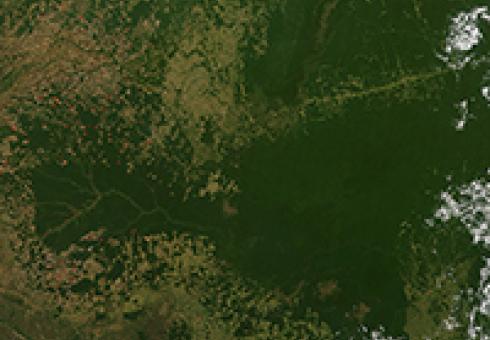News and Outreach: Sergey Paltsev
MIT researcher Sergey Paltsev discusses the outlook for LNG trading over the next several decades.
Until recently, most natural gas trade has been limited to the regional scale due to the challenges of transporting gas over long distances. Over the last decade, Liquefied Natural Gas (LNG)—an option that reduces the volume of gas about 600 times allowing for transportation by ship—has created an opportunity for expansion of the international market for natural gas.
In this report, Joint Program researchers examine the prospects for LNG trade over the coming decades. Part of a collaborative project between MIT and Cyprus, the report estimates that LNG trade volumes will increase from about 240 Mt LNG in 2014 to about 340–360 Mt LNG in 2021.
Sergey Paltsev, coauthor of the report and a principle research scientist and assistant director for economic research at the Joint Program, discusses some of the report’s findings.
Q. The increase in trade volumes is largely the result of new LNG infrastructure projects. What’s causing the upswing in construction?
A. The main force driving many of these new LNG projects is the high price of LNG in Asian markets. The cost of natural gas in the US right now is about $4/mmbtu. If you add in liquefaction and transportation costs it’s about $10-11, whereas Asian prices up until recently were $14-$16. So, with this price differential an LNG exporting operation can be quite profitable. Actually, the trend that we’re seeing with new LNG projects is the opposite of what we saw less than ten years ago. In 2005 and 2006, US companies were building regasification capacity, or in other words, terminals to get gas into the country. Now, a lot of infrastructure is sitting idle because US prices are so low. Many of the current U.S. projects are actually taking the existing import terminals and converting them into liquefaction facilities, or export terminals.
This underscores why long-term market analysis is so important. Since the development and construction periods of these projects are so long, 4-5 years on average, any projects started now are not going to ship gas until 2020; and those facilities are going to be operational for at least 20–30 years. So that means you need to understand the market dynamics not just today, and probably not just in 2020 when you start operation, but also in 2030, 2040, and 2050.
Q. Is the US going to become a major player in the LNG market?
A. There are a lot of projects that are in the permitting process right now. To export LNG from the US, you need approval from the DOE and the Federal Energy Regulatory Commission (FERC). If you add up all of the applications which are currently in the pipeline and those projects labeled by FERC as potential, the total is more than half of the US current natural gas production. Obviously many of these are not going to happen, but everyone is trying to capitalize now. There are currently only two US projects that are likely to be completed before 2020—the Sabine Pass and Corpus Christi projects run by Cheniere Energy, Inc. In comparison to the current very limited exports from the US, these two projects will substantially increase exports from the US. So the US will have some share of the LNG market, but I don’t see it becoming the dominant player.
Most of the exports from the US will likely go to Asia, and one thing to note is that the price of LNG in Asia will start to come down as shipments of LNG increase. Over the next ten years, the global price of LNG will equalize—in other words, the price will be the same in all regions, with the main difference being the cost of transportation. So, the price differential between the US and Asia is going to narrow.
Q. What’s the long-term prognosis? Have we entered a golden age of LNG trading?
A. LNG is poised for substantial increases. Looking at the supply side, the LNG market is going to expand. Suppliers who have traditionally been in the pipeline business, like Russia, are now actively pursuing LNG projects. Again, this growth is being driven by the high price of LNG in Asia, which isn’t going to last forever. So some of the hype is going to diminish, but even with a lower Asian price this mode of natural gas trade is still going to expand.
Future demand is harder to estimate because there’s more uncertainty there, especially when much of the future demand will be determined by carbon policies, especially in China and India. Developing countries are expected to dominate new demand, and this trend is likely to continue. In addition, the LNG technology keeps evolving. In our report we discuss the potential effects of floating LNG (FLNG)—ships that liquefy gas onboard. FLNG could have a substantial impact on the industry if proven viable, since it removes the need to build permanent infrastructure.








